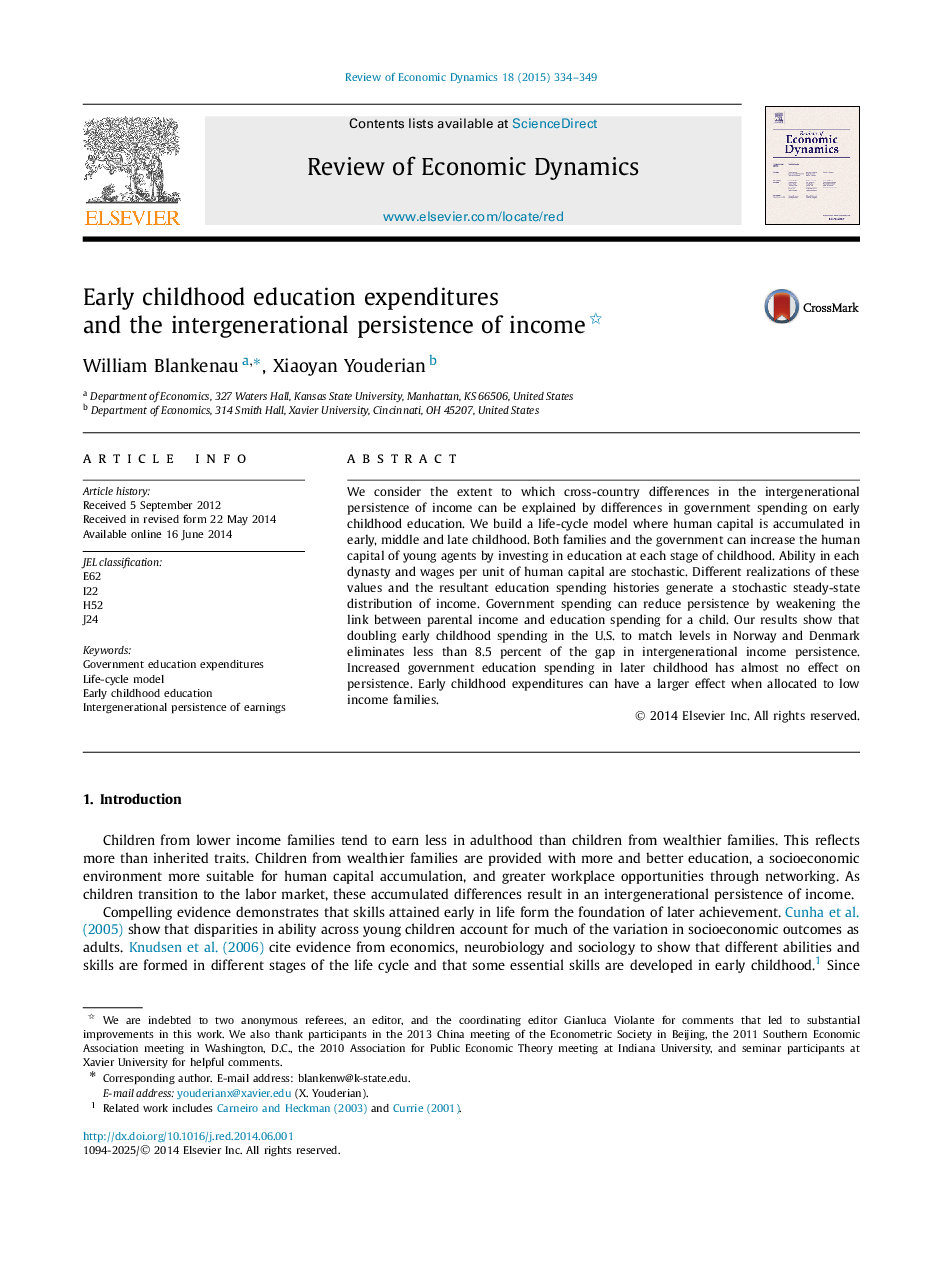| Article ID | Journal | Published Year | Pages | File Type |
|---|---|---|---|---|
| 986649 | Review of Economic Dynamics | 2015 | 16 Pages |
We consider the extent to which cross-country differences in the intergenerational persistence of income can be explained by differences in government spending on early childhood education. We build a life-cycle model where human capital is accumulated in early, middle and late childhood. Both families and the government can increase the human capital of young agents by investing in education at each stage of childhood. Ability in each dynasty and wages per unit of human capital are stochastic. Different realizations of these values and the resultant education spending histories generate a stochastic steady-state distribution of income. Government spending can reduce persistence by weakening the link between parental income and education spending for a child. Our results show that doubling early childhood spending in the U.S. to match levels in Norway and Denmark eliminates less than 8.5 percent of the gap in intergenerational income persistence. Increased government education spending in later childhood has almost no effect on persistence. Early childhood expenditures can have a larger effect when allocated to low income families.
